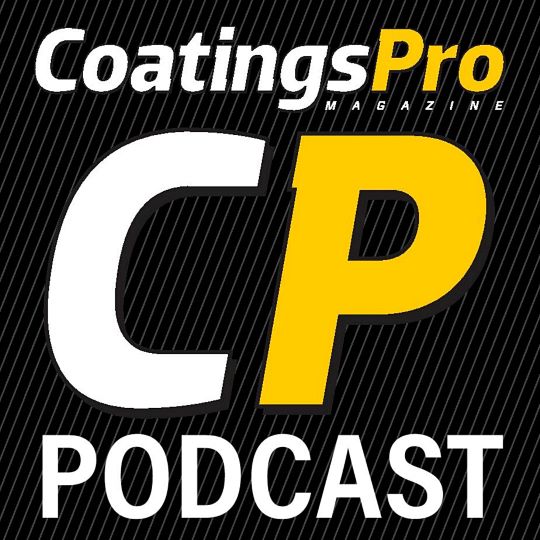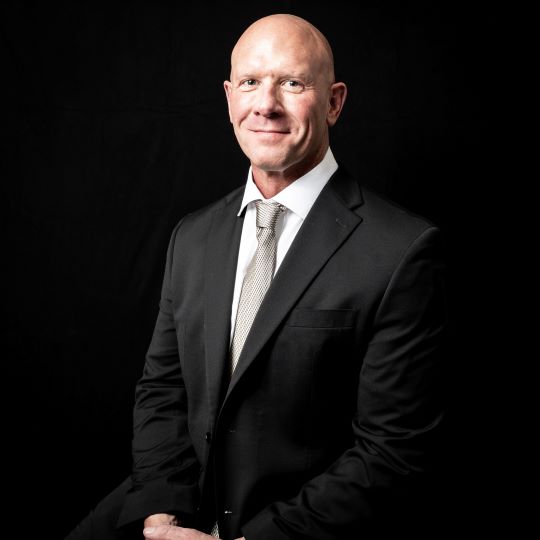The annual U.S. Veterans Day holiday was celebrated throughout the country in November, including in industries and job fields tied to the Association for Materials Protection and Performance (AMPP). U.S. Navy Veteran Matt Flory is a global business director at Sherwin-Williams, where he leads the industrial group’s military coatings segment.
With a team comprised largely of Veterans, Flory recently joined the CoatingsPro Interview Series of podcasts to share perspective on what skills they bring to the business, as well as the role they can perhaps play in overcoming workforce development challenges.
For the military market, Flory also offered insight regarding recent technological innovations such as chemical agent resistant coatings (CARC); anti-microbial solutions; enhanced corrosion primers; and more. Read on for a partial Q&A transcript, and listen to the full episode online at www.coatingspromag.com/podcasts or at the embedded link below.
Q: What was it about the coatings industry that resonated with you? I know your role with Sherwin-Williams involves military coatings, so there’s a direct tie there. But broadly speaking, why was that so impactful and fulfilling… to where you wanted it to become the focal point of your work life, after your military service?
Matt Flory: For whatever reason, it’s something that just clicked for me. The process of coatings and everything that goes into it with pre-treatments, and the coating process itself… I tend to be a more detail-oriented person, and paints and coatings just seemed like a natural fit. I grasped it, understood it, and was able to kind of build a career off of that.
When you talk about purpose, and especially as you move into a company like Sherwin-Williams that focuses in so many different areas or industries, working with the military was just a perfect fit. It’s a coating, but you’re not just selling paint.
There’s something very critical that goes into these coatings for the warfighter, and for our military. That can be the corrosion protection that it provides for the durability or lifespan of that product or vehicle, or just the IR [infrared] signatures and certain requirements to go into the coatings.
Q: What types of technical properties are military clients looking for, and does your past experience with the military help you in any way when it comes to understanding that?
 Matt Flory: Like I said, it’s more than just a typical coating or color. These are very functional coatings, and so it serves a purpose within the industry that is very unique. People think about military coatings in terms of maybe camouflage, tans, greens, and so forth. But that visual camouflage is just one aspect of it.
Matt Flory: Like I said, it’s more than just a typical coating or color. These are very functional coatings, and so it serves a purpose within the industry that is very unique. People think about military coatings in terms of maybe camouflage, tans, greens, and so forth. But that visual camouflage is just one aspect of it.
The topcoats we use in this segment are what we call CARC, which is chemical agent resistant coatings. Let’s say a vehicle was attacked by a biological or some other kind of anti-microbial weapon or system. The coatings can hold up to that type of biological attack and don’t allow the agent to actually enter the coating system. Then, secondarily, it holds up to the very harsh process of decontamination. That’s one of the big functional aspects.
There’s also an IR aspect. If you’re looking at a field of vehicles, if the coatings did not have the IR signature, they stand right out. But with the correct IR signature, it just blends in with the background. I’ve got some good visuals that represent that. Those are the main points of the coating itself, and what it needs to perform.
Personally, for me, I was in the Navy. The coatings that we use in the Navy are very functional coatings, but they don’t have the same criteria as a CARC or IR signature. So, it’s also about understanding what the need is for the military and what the end use is. It can be about corrosion resistance, extending the life of a vehicle or ship or whatever it may be, and we’ve got to make sure [as a manufacturer] that we’re hitting those requirements.
Q: Your team that has several Veterans on it, and that’s certainly played a role in Sherwin-Williams becoming one of the primary coating suppliers for the U.S. military. How did that come to be, and what was and is building that type of relationship like to where military end users trust you all to develop what they need?
Matt Flory: There are a lot of different relationships that we have within this industry. We work closely with the Army Research Lab on coating development requirements that they’re making and the specifications. As new threats arrive on the horizon, or things that they need to be working towards for future threats.
We’ve also had a very strong, standing relationship with a lot of the large OEMs [original equipment manufacturers] within the military market. So, as they develop and grow their product lines, you’re awarded different contracts.
We always want to team up with our customers. It’s not just selling paint to our customers or providing them with what they need, but truly being a partner and being very transparent with what we’re working on. We need to make sure we’re meeting their requirements and criteria, and hear if there’s anything we can do to improve the process.
We want to be a true partner, not just hand over paint to anybody that needs it. We want to be a part of that organization and really help bring the best out of them.
Q: What can veterans bring to the table, from the perspective of workforce development? What’s unique about your team?
 Matt Flory: Our team has many different backgrounds and different branches of service, but it’s such a good group to work with. It was just a natural transition, I think, for all of us involved. It’s something that, I think I can speak for the team when I say that we all feel very passionate about what we’re doing, in the segment that we work in.
Matt Flory: Our team has many different backgrounds and different branches of service, but it’s such a good group to work with. It was just a natural transition, I think, for all of us involved. It’s something that, I think I can speak for the team when I say that we all feel very passionate about what we’re doing, in the segment that we work in.
Looking to Veterans when you’re looking for a qualified individual or to fill roles within your organization, there’s so much that can be said about it. Obviously, there’s the experience we’ve had through our own training within the military and the organization that we're a part of.
Typically, Veterans—like the employees I work with—are disciplined and organized. They understand projects that are time bound, and that they need to be performed and completed by a certain amount of time.
They’re also very individual workers. It’s not that they don’t need oversight, but when you give someone a task, it pretty much gets done. There’s not a lot of chasing people around looking for assignments. It’s just a unique background that Veterans provide, and some people just don’t have that exposure.
For myself, being an 18-year-old farm kid from Ohio and going into boot camp, I’ve got people there from all over the country, and all different types of diversity and ethnic backgrounds. You come together, and there is no room or opportunity not to. You’re on the same team. You live with each other, you work with each other, you’ve got each other’s backs… and that can be a little bit of a culture shock, for many of us.
Whether you’re a farm kid from Ohio or from the South side of Chicago, you go in and equality is understood from the beginning. You’re not the kid from Ohio or from South Chicago. You’re in the Navy, you’re a soldier, you’re a Veteran, or whatever it may be.
When we look at our organizations today and how we want people to come together and work with each other, Veterans have the experience that a lot of people just don’t have. When I came out of boot camp, I got stationed in Japan. It was a little bit of a culture shock, but you learn to adjust, and you’re in a very unique situation.
Flory’s comments were made on the CoatingsPro Interview Series. To hear the complete podcast episode, listen below.
Editor’s note: This article first appeared in the November 2024 web lineup of CoatingsPro Magazine. Reprinted with permission.